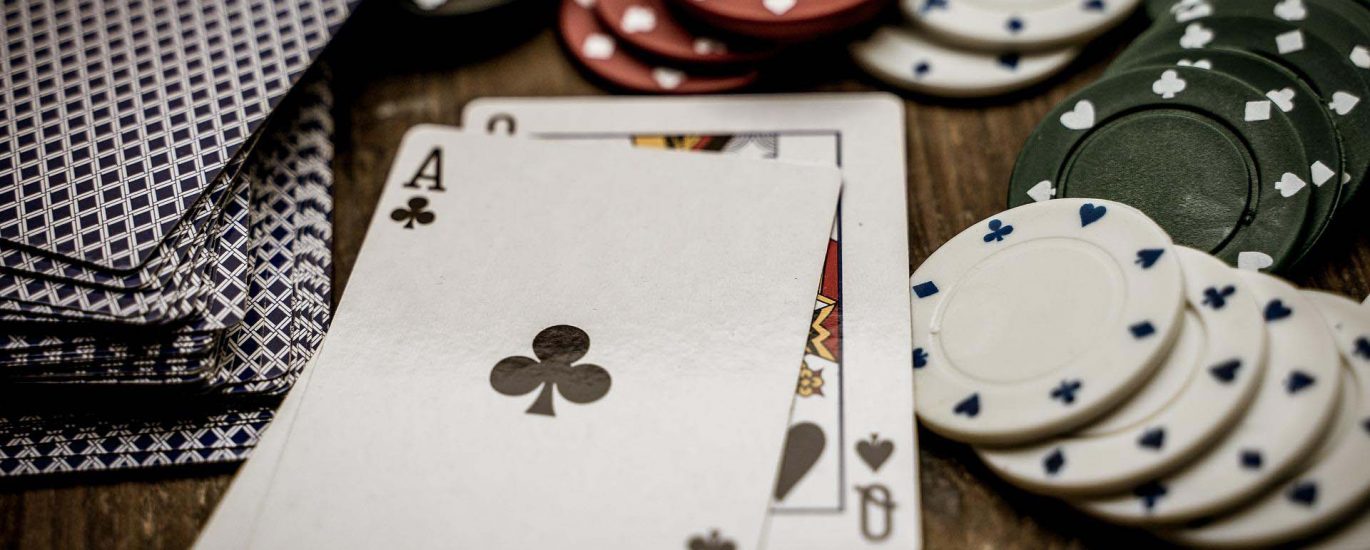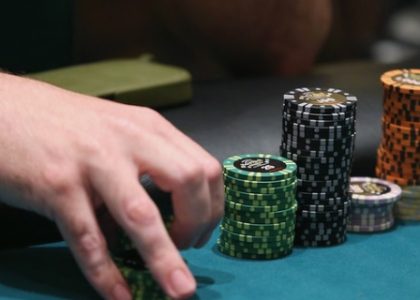Even if you don’t plan on becoming a professional gambler, knowing how to play voslot blackjack is good for a few laughs around the table. With practice, you might even win money like the best of them!
About Blackjack story
The game of blackjack originated in France and was called vingt-et-un. But it exploded as a popular casino game after the publication of Beat the Dealer by Edward O. Thorp in 1963. The book proved that it was possible to beat the dealer at his own game and explain how you could do so successfully. Which, by the way, is still something gamblers are trying to do today!
The Blckjack Game Cards
Blackjack is a great game for the beginner or professional player. It’s simple rules, skill and chance betting strategy have kept this game popular for decades. The goal is to get cards as close to 21 without going over. This may seem simple enough, but with the use of more than one deck of cards, it begins to get quite complicated. The cards were traditionally shuffled by the dealer, but most casinos now use continuous shuffling machines. In single- and double-deck games the dealer holds the cards and deals them out. In multi-deck games, the cards are dealt out of a tray-like box that is called a shoe. Some casinos feature a shoe that shuffles as well as holds the cards. In handheld games, the cards are dealt face down and players are allowed to pick up their cards. In a shoe game, the cards are dealt face up to the players, who are not allowed to touch them.
The Blckjack Basic Play
The object of a blackjack game is always to beat the dealer, which means getting as close as possible to—or more than—the number 21 without going over it. If your hand goes over that total, you bust and lose your bet. If the dealer busts, you win. The house always holds an advantage over its players in the casino games. Which in the case of blackjack is 5 percent (meaning for every dollar bet, the casino keeps, on average, five cents). It’s another interesting feature of blackjack that the dealer’s bust potential is usually lower than the players.
Card Values
The rules of blackjack are simple to learn, but playing it well requires a combination of good luck and sound strategy. Unlike in poker, the suits of the cards have no effect on the game. Only their numerical value comes into play in blackjack. Cards 2–10 are counted at face value—in other words, a two of hearts, spades, diamonds, and clubs always equals two points, and so on up the ladder to the 10. All face cards—king, queen, jack—have a value of 10. An ace can count as either one or eleven. In the play, a queen and a five would equal 15, but an ace and a five would total either 6 or 16. A hand that does not have an ace is referred to as a hard hand because it has only one value. A hand that contains an ace is referred to as a soft hand because the value can change. If you draw to a soft hand and the three cards total a number where counting an ace as 11 puts you over 21, then the hand becomes a hard hand. For example, say you are dealt an ace and a three. Your hand is either a 4 or 14. If you then draw a 10, you now have a hard 14 because if you count the ace as 11 you would have 25, which would bust you.
More About Table Play
Blackjack is one of the most popular casino games because it’s so easy to play. There are no complicated rules or moves – just place your bet, draw cards and win! Blackjack is dealt on a special table that is semi-circular in shape. There is a separate circle or square for each player. When you sit down you must buy chips from the dealer or bring them from another table. You then put your bet in the betting circle in front of your space. For this example, we will assume you are playing a multi-deck game and the cards are being dealt from a shoe. Each player is dealt two cards face up. The dealer receives one card face up and one card face down, known as the hole card. After the cards are dealt, the dealer will ask each player in turn to make their decision. The player to the left of the dealer acts first. This position is known as first base. The position of the last person to act is called third base. You will make your decision about how to play your hand based on the dealer’s up card and the two cards that you were dealt. A rule of thumb for the beginner is to assume the dealer has a ten in the hole. (This is not always the case, but it makes it easier to place your bets by making this assumption.)
You Can Using Hand Signals
Verbal and hand signals are used to keep the game moving quickly. The use of hand signals is mandatory in all cases. Use a friendly tone when delivering instructions so players do not feel threatened or embarrassed by being told what to do. These signals are as follows:
Split a Pair – If you are dealt a pair (two cards of the same rank) you can split these into two separate hands. At which point you must make an additional bet equal to your starting bet. You signal the dealer that you are splitting by placing your second bet next to your first bet in the betting circle. Do not put this bet on top of the original bet. Do not separate the cards. The dealer will do this for you. Neither will you play each hand one at a time. The dealer will give you a second card to go with the first split card. You will then decide to hit or stand. After you play out this hand and stand, you will move on to the next split card and the process will be repeated. Some casinos will allow you to double down on your first two cards after splitting. You would play this as you would if you were doubling down on your first two cards. This rule is favorable to the player.
Stand – Once you are satisfied with your cards, you signal the dealer that you wish to stand (not receive any additional cards). You do this by waving your hand over the top of your cards.
Hit — To take a hit means that you want to draw another card. To signal the dealer for a hit you tap the table in front of you or make a beckoning motion with your hand. If you wish another card after the first you motion in the same manner.
Double Down – When you double down you are allowed to double your bet after receiving your first two cards. You then receive one card only on your hand. Most casinos will allow you to double down on any two cards (DOA). Some casinos limit your doubling to hands that total 10 or 11. DOA is a favorable rule to the player. To signal that you are doubling down you will place an additional bet next to your original bet. Most casinos will let you double down for less than your original bet, provided it meets the table minimum. This is foolish. You only double in favorable situations, and it is to your advantage to double for the maximum.
how to get blackjack
When you are dealt an ace and a 10-value card, you have 21 known as a blackjack. If you have the blackjack, you will be paid 3-to-2 for your bet, provided the dealer does not get a 21 at the same time. If you and the dealer have blackjack, that’s called a push and your bet is returned to you. If only the dealer has blackjack, all players will lose.
The Insurance
In case you’re playing blackjack and the dealer’s up card is an ace, the dealer will offer something called insurance. This bet is a side bet that you make by wagering half your original bet that the dealer has a 10 in the hole. If you make this bet and the dealer has the 10, you are paid 2-to-1. You would then lose your original bet, but win the insurance bet, which works out to be a push of your original bet. If you have a blackjack and the dealer has an ace, you will be asked if you would like even money for your blackjack instead of 3-to-2. If you do not take the even money, you will have a push if the dealer has a blackjack. Both the insurance and the even money bet are sucker bets. The dealers will NOT have 10 more times than they will have one.
Surrender
Some casinos will offer you the option to “surrender” your hand and give up half your bet on your first two cards after the dealer checks for a blackjack. This is known as late surrender. This option is not offered in all casinos, though. It is best to play it correctly, but many players surrender more hands than they should, thus giving up the advantage gained by this option.
Try The Simple Strategy
In blackjack, playing your hand properly means following a mathematically proven method to determine when to hit and stand. If you play within the rules of basic strategy, you can reduce the house edge to less than 1%. To do this you must learn basic strategy, which is a mathematically proven method to determine when to hit and stand. Here is a simple strategy to get you started:
● If the dealer’s up card is a 2–6, it is a “stiff” hand for the dealer.
● If your first cards total 12–16 you have a “stiff” hand (one that can be busted with a hit).
● If the dealer shows a 7–ace, he or she has a pat hand.
● If you have 17 or better it is a pat hand, and you stand.
● If you have a stiff hand and the dealer has a pat hand you HIT.
● If you and the dealer both have a stiff hand, you STAND.
You may start by playing basic strategy and rely on common sense at a blackjack table. Although this simple strategy will get you by the first several times you play the game, you really should make the effort to learn even more basic strategy. Blackjack can be the best game in the casino, with the lowest house edge, if you play properly. However, if you play by hunch, it will end up being nothing but a source of frustration—and disappearing funds.










